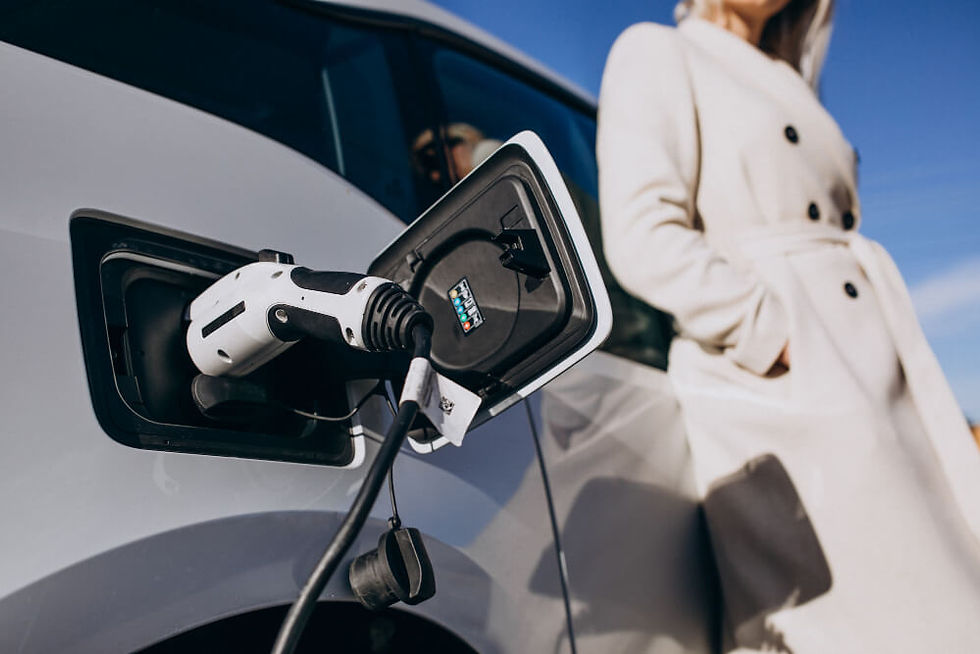Wiring and Power Requirements for EV Charger Installation
- Social Media
- May 5
- 3 min read
Thinking about setting up an EV charging point at home or your business location? It’s a great step toward cleaner, more convenient travel—but before plugging in, there’s something important to sort out: the wiring and power setup.

EV charging point installation isn't just about buying a charger and mounting it. It’s about understanding whether your electrical system is ready to handle it. The good news? You don’t need to be an electrician to grasp the basics.
Let’s break it down.
1. Know Your Power Supply First
Your home or building’s electrical system must be able to support the charger. That’s the first thing to look at.
Most homes run on single-phase power, which is usually fine for basic EV chargers.
Larger buildings and commercial spaces may have three-phase power, offering more juice and faster charging.
Before beginning your EV charging point installation, make sure your panel has available capacity. Chargers pull a lot of current, and you don’t want to overload your existing circuits.
2. Circuit Breaker and Load Capacity
Every EV charger needs its own dedicated circuit. Why?
Because sharing a circuit with other appliances can cause tripping or, worse, damage.
Here’s what you’ll typically need:
A breaker rated appropriately for the charger's amp draw
A breaker space in your main panel or sub-panel
You also want to calculate load capacity—in simple terms, whether your system can handle one more big energy-hungry device. An electrician will usually perform a load calculation to confirm this.
3. The Right Wiring for the Job
Wiring is the backbone of any safe EV charging point installation.
You’ll need:
Proper gauge wire (thicker for higher amperage)
Weatherproof conduit for outdoor installs
Heat-resistant and high-quality cables for durability
The wire gauge depends on the charger’s amperage. For example, a 32-amp charger typically uses 6-gauge copper wire. But again—your specific setup determines the exact requirement.
Quick tip: Keep wire runs short when possible. The longer the wire, the more voltage drop occurs, which can affect charging efficiency.
4. Indoor vs Outdoor Setup Considerations
Installing indoors (like in a garage) usually means less environmental exposure and simpler wiring runs.
Installing outdoors? Then:
Use weather-rated enclosures
Ensure all wiring is UV and moisture-resistant
Consider installing a ground fault circuit interrupter (GFCI) for added safety
Every EV charging point installation outdoors must also consider water drainage, shielding from the elements, and secure mounting.
5. Grounding and Safety Essentials
Grounding matters—a lot.
A proper ground protects your vehicle, your home, and your family in case of a fault. A licensed electrician will make sure:
The system is bonded correctly
The ground rod and wire are up to standard
Breakers are installed with proper safety measures
Even if everything seems good on the surface, a poor ground can ruin a charger or vehicle over time. It’s one step you definitely don’t want to skip.
6. Smart Charger Compatibility
Planning to install a smart EV charger with app controls or power management?
Just know that these often have extra wiring needs, like:
Ethernet or Wi-Fi modules
Dedicated grounding paths
Relay or sensor wiring
Smart chargers are a great upgrade, but the EV charging point installation process can be slightly more complex.
7. Final Checks Before You Plug In
Here’s a quick pre-install checklist:
Do you have an available breaker slot?
Is your panel rated for the added load?
Is your wiring properly sized and installed?
Is the charger grounded and protected from elements?
Have you tested the system before regular use?
Each box ticked means you’re one step closer to a smooth EV charging point installation.
Final Thoughts
Wiring and power setup might not be the most exciting part of the EV charging point installation process—but it’s one of the most important. A safe, reliable setup ensures your vehicle charges efficiently and your electrical system stays protected.
Take your time. Ask the right questions. And when in doubt—get professional help.
FAQs About EV Charger Installation Requirements
Q1: Can I install an EV charger on my own?
If you have electrical experience, it’s possible—but a certified electrician is recommended for safety and compliance.
Q2: Do all EV chargers need the same wiring?
No. Different chargers (Level 1 vs Level 2) have different amperage needs, which affects the wire size and circuit requirements.
Q3: What happens if I use the wrong wire size?
Undersized wires can overheat, trip breakers, or fail to deliver full power. It’s a safety hazard and may shorten charger lifespan.







Comments